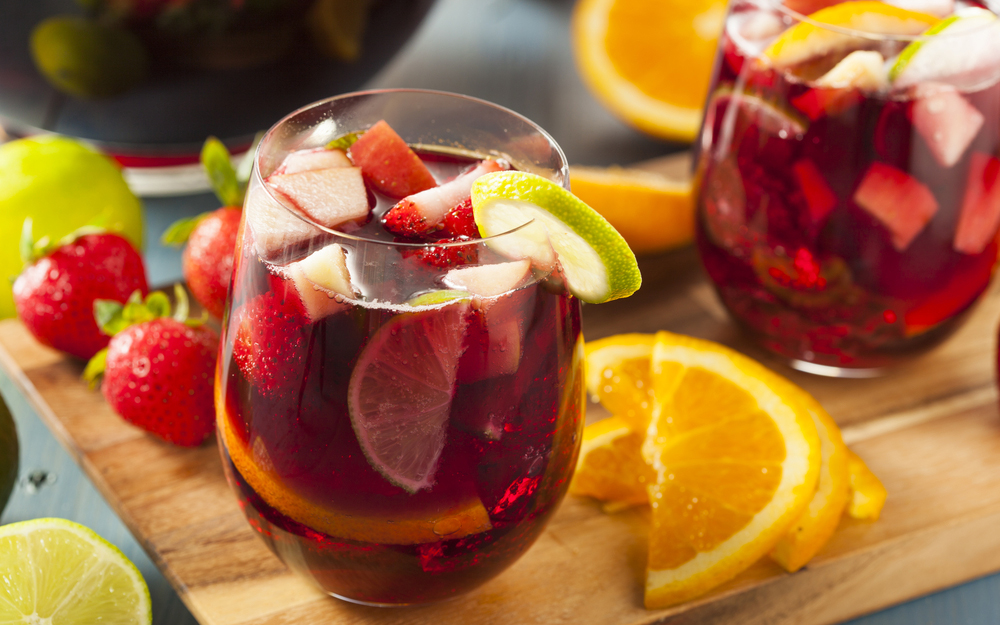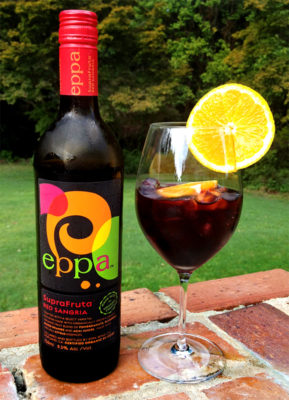
BY RICK RIOZZA
Good memories of refreshing Spanish sangria bring to mind a concoction of lively tasty wine with a keen balance of tart and fruity flavors. The welcoming sangria needs to revive the spirit and awaken the senses. Fortunately, for all that’s good in sangria, you’ll wish to stay away from the poorly made stuff.
There are so many prepared wine cocktails on the market now with the convenience of chilling and opening up at a moment’s desire, we sometimes forget that we can spend a little quality time to prepare one of the best wine punches of all time. And it’s a very summer fun thing to do in the kitchen with our laid-back desert sensibility.
The Spanish and Portuguese—with all the hot weather of their own, have been enjoying a fruity wine punch for ages. With all of the fancy and professional mixologists about town, we can imagine some pretty inventive creations involving fruity wine and fresh fruits; but there are some essential ingredients:
Purists may want something made with a red Spanish wine such as a Tempranillo or a Garnacha that provide moderated fruit flavors and can bring on some nice complexities. Plus, they’re both so reasonably priced and found in every store. But let’s remember, one of the main points of making sangria is to use the leftover wine from a prior meal or party—so any wine will do.
Summer stone fruits, oranges and lemons, wedges or sliced are the usual harvest fare. A particular fruit pairing that works well with red wine without throwing in a bunch of fruit are using only apples and lemons. The bitterness of the lemons and the crisp freshness of the apples work great against the rich red wine. On the other side of things, a more dessert-y punch would be to use peaches and pineapples. Some folks will add the cut fruit immediately to the mix; some, will only use the fruit as a garnish in the glass.
Of course what supplies the heft to the drink are small portions of spirit and liqueur. By tradition, that means Spanish brandy and the orange flavored triple sec. Cognac, gin, and vodka can always replace brandy, but generally speaking the punch will require some sort of orange liqueur, such as Cointreau. There is something to say about the orange tinge of flavor in the red sangria.
In the Basque area of northern Spain, there’s a very similar punch where they use syrup sweetened with dried fruit, cinnamon, and juniper berries. Very flavorful and complex.
Other nuanced sangria recipes include adding a certain amount of dry rosé to your regular potion of red wine. This lightens the blend a bit; an especially good idea when it’s really hot out. It’s good to remember this notion when you find that the type of red wine you’ve used was a tad too full-bodied for your desired punch.
Some enthusiasts will spend the time to get the “perfect” blend of flavors just from the wine and the spirit/liqueur. They will then put the mix into the fridge overnight to allow the punch to knit together. The next day, they may add a bit of orange juice, some high-quality orange soda, or just some carbonated soda, to taste or adjust the sweetness. This could also affect the “texture” of the sangria—so be cautious; but hardly problematic as we’re simply making a wine punch: have fun!
As you can discern, the beauty of this drink is that there is no exact recipe. It’s a great opportunity to explore your inner-artistic talents as a mixologist!
 And just when you were considering your red wine concoction, realize that there is another world of white sangria. As you can imagine, it’s light, zippy, and perfect under the summer sun. Any white wine will do, but as opposed to using your favorite Chardonnay, I would advise picking a zesty and aromatic white wine such as a Sauvignon Blanc, Torrontés, Albariño, Chenin Blanc, Riesling or Pinot Gris. If you were to pair your white sangria to a seafood platter, you would do well to use the Spanish Albariño—it’s always the perfect match!
And just when you were considering your red wine concoction, realize that there is another world of white sangria. As you can imagine, it’s light, zippy, and perfect under the summer sun. Any white wine will do, but as opposed to using your favorite Chardonnay, I would advise picking a zesty and aromatic white wine such as a Sauvignon Blanc, Torrontés, Albariño, Chenin Blanc, Riesling or Pinot Gris. If you were to pair your white sangria to a seafood platter, you would do well to use the Spanish Albariño—it’s always the perfect match!
You can use nearly any kind of fruit to garnish the white sangria as you would your red. But you’ll notice though that limes, lemons, berries, peaches, and apples especially shine with the white. As opposed to using an orange liqueur, this time vodka, gin, or white rum does very well, with maybe a hit of 7-Up or club soda. Of course for those real sangria enthusiasts, the French Calvados—apple brandy, is the quintessential liqueur to use.
With all of the best intentions in mind, sometimes we just didn’t get around to preparing our favorite sangria punch in time for the party—but we’re jonesin’ for it none-the-less. The nation’s number one brand import from Spain is Cruz Garcia Real Sangria, $6.99, on the shelves with its colorful label and its iconic triangular shaped bottle isn’t bad in a pinch. But we’re all a little skeptical about a traditional “fresh fruit wine” being sold all bottled-up.
Now the 2nd most popular bottled sangria raging through our country is Eppa Superfruta Sangria, $10.99. It’s a very “modern” sangria that is Certified Organic both as to grapes and fruit that include pomegranate, blueberry, blood orange, and açaí juices. It does have those puckering tannins—which is a good thing, but I recommend adding at least some lemon wedges and a dash of Sicilian orange liqueur to your glass.
¡Salud!










































